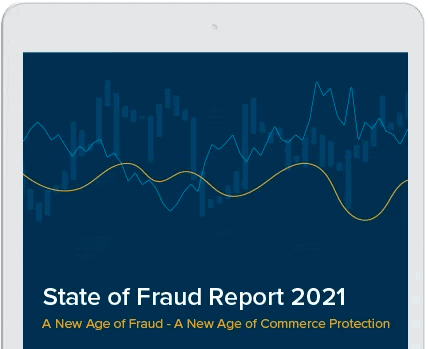Everybody, it appears, has fallen in love with retail’s buzzy buy now, pay later (BNPL) programs.
Consumers love the financial flexibility. Merchants love the conversion rate. And fraudsters love the ability to bilk retailers.
BNPL is a relatively new payment innovation and a simple way for shoppers to split the cost of purchases over three or four monthly installments – often without interest. Essentially, these programs, offered by firms such as Bread, Sezzle, Affirm, Afterpay, Klarna and others, act as point-of-sale loans that help consumers who may not have access to credit. It’s like the traditional layaway plans – except the customer gets to walk out the door with the merchandise — or have the merchandise delivered to their door.
In 2020, BNPL accounted for nearly $100 billion in global ecommerce transactions. That figure is likely to double in two years, according to Worldpay – and that’s not counting brick-and-mortar sales. More than 40,000 U.S. retailers – including giants such as Amazon and Walmart – now have BNPL plans in place.
Holiday sales show buy now, pay later is here to stay
Looking back at the recent holiday shopping season, the growth in the shopping channel was apparent. According to a Signifyd data analysis over the long Thanksgiving weekend — the traditional start of holiday shopping — BNPL shopping grew sharply in 2021 over 2020. The percentage increase by day:
- Thanksgiving Day: 42%
- Black Friday: 57%
- Small Business Saturday: 64%
- Sunday: 54%
- Cyber Monday: 57%
With the growth of BNPL transactions comes growth in the opportunities to commit online fraud and policy abuse, particularly return abuse. A rise in return fraud and abuse accompanied the explosive growth of ecommerce in the pandemic era. Buy now, pay later, it turns out, offers another avenue to commit return abuse and fraud.
- Buy now, pay later programs in ecommerce are wildly popular with consumers and merchants. But the modern spin on layaway opens the door to creative versions of return fraud and abuse. In essence, the BNPL plans lower the necessary investment for serial wardrobers, bracketers and others.
- Return fraud cost online retailers $11.6 billion in 2020 in the cost of goods alone, according to a Signifyd analysis. Add in the cost of logistics, restocking or disposal and the potential for the lost opportunity to sell an item and the damage is staggering.
- Signifyd’s Return Abuse Prevention solution uses data from Signifyd’s vast Commerce Network to understand the identity and intent behind return requests and empowers retailers to stop bad returns before they become a painful cost of doing business.
As it is, nefarious shoppers and organized criminal gangs are exploiting loopholes in the system to the tune of $43 billion annually in fraudulent returns. And the expectation is BNPL’s role in return abuse and fraud will only grow.
Just where does BNPL fit in, when it comes to return fraud? Start with bracketing – the practice of shoppers ordering multiple sizes, colors or patterns of the same piece of clothing, for example. It has become an expensive use case for BNPL. Let’s say a shopper wants to buy a $150 cashmere sweater but is not certain of the correct size or wants to determine the proper color or design. With BNPL, that consumer could order five sweaters and pay just a fraction of the actual price while the retailer just watched $750 of inventory removed from the shelves.
Even if the big order results in the sale of one $150 sweater, the merchant has to pay all the auxiliary costs, such as shipping, handling and restocking, for the other four sweaters. And with apparel, it’s possible the sweater will be out of season or out of style by the time it’s ready for sale again. With the retail supply chain disrupted by a global pandemic, the problem intensifies.
Return Abuse Prevention disrupts return fraud schemes
Retailers walk a fine line between providing consumers with the ultimate in convenience and exposing themselves to added expenses and the possibility of being taken advantage of. Anything they can do to decrease the number of returns is helpful.
Earlier this year, Signifyd launched a solution that addresses return abuse and fraud head-on. Return Abuse Prevention uses artificial intelligence to spot troubling shopping patterns and identify potential abuse. It also provides merchants the flexibility to set automated guardrails to alert customer support employees to the degree of risk involved with a return request — identifying them as low risk, moderate risk or high risk — along with recommendations on whether and how to process the return.
“What our product is there to do is let merchants keep their great flexible return policies for everyone who is good,” said Eleanor Ritchie, a senior product manager at Signifyd focused on returns and refund abuse. “Our product can easily identify those who are bad actors, and can help mitigate their behavior.”
Ritchie uses “wardrobing” – a common problem for apparel retailers – as an example of how Signifyd Return Abuse Prevention works. “A shopper buys an entire outfit and wears it to an event and then returns it. The outfit can’t be resold. Our product really gives the merchants the ability to integrate with Signfiyd at their return points and tap into that network of data that we’ve been building over the past 10 years to see how people are behaving in terms of their order behaviors.”
Signifyd’s Decision Center can actually spot wardrobing behavior based on what the company’s machine learning models have learned from billions of transactions from merchants around the world.
7.5% of ecommerce returns are fraudulent, costing billions
In 2020, roughly 18% of online retail sales were returned and 7.5% of those returns were fraudulent, according to the National Retail Federation. For the retail industry, that fraud amounted to $11.6 billion in the cost of goods alone, according to a Signifyd analysis. But when you add in shipping costs, inspection costs, restocking costs or liquidation costs, that figure quadruples.
“Returns abuse is an area that hasn’t had a lot of attention up until pretty recently,” Ritchie said. “This problem has existed, but it has been mostly accepted as a cost of doing business. This problem will continue to grow. Returns are extremely costly. So whatever a merchant can do to reduce some of that operational cost and reduce some of those losses is going to be hugely beneficial to the bottom line.”
As ecommerce sales continue to become a greater portion of retail sales, combatting the challenge of returns is now more important than ever for merchants. Online purchases are much more likely to be returned and the percentage of bogus returns resulting from online orders is significantly higher than in-store purchases.
Big holiday sales could mean big January returns
Heading into the holiday season, the National Retail Federation projected U.S. shoppers would shatter records, spending $850 billion for the period. Indeed, Mastercard reported that spending was up 8.5% overall during holiday 2021 and that online spending soared 61.4% over 2019’s pre-pandemic holiday season. Now all indications are that January 2022 could be a record-setting month for returns.
“January is the crucial month for returns. So I am definitely expecting an uptick in return abuse this month,” Ritchie said. “We’re ready. We’re excited. Since this will be the first holiday season with Return Abuse Prevention program deployed, it will give us a strong benchmark.”
Photo by Getty Images
Want to avoid return fraud headaches? Let’s talk.








